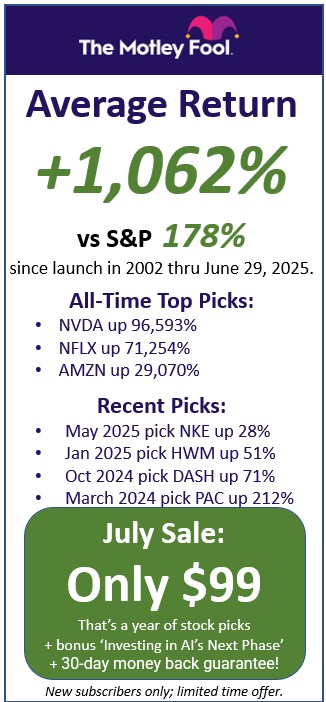If you are remotely interested in the stock market, you have probably done a lot of research online.
So, when you see an ad for the Motley Fool, don’t ignore it.
Especially if it is for a triple buy.
What is a triple buy?
Before we jump into what a triple buy is and why it’s so important…
…let’s discuss stock market research, in general.
From there, we can narrow down why the Motley Fool triple buy is such a significant notification.
Today, there are more options than ever for stock market research and in-depth company analysis.
This plethora of research is both a blessing and a curse.
On the one hand, having an abundance of research should make it is easier to perform:
- Strong due diligence;
- Compare analysts against each other; and
- Form your own opinion on a particular stock.
On the other hand, too much information can lead to analysis paralysis.
“Analysis paralysis” is when you are bombarded with so much information that your brain just freezes up, and you can’t process any more information.
If we are being honest, this is probably a more likely scenario if we open up 10 different analyst reports on the same company.
Accordingly, we just want to know what to do.
What to Look For
So, what should you even look for when you are trying to invest in a stock?
You can say that you’re doing research all day long.
However, if you don’t have a standard that you are comparing your data to…
…then you’re not really going to go anywhere.
You may even be setting yourself up for failure wandering aimlessly through a forest of spreadsheets.
When you are valuing a stock or trying to form an opinion on the performance of a particular company, there are a few metrics that are always helpful.
These metrics can give you a quick snapshot of the company’s financials.
Let’s check them out.
Earnings Per Share (EPS)
Both growth and value investors maintain a laser focus on a company’s earnings per share.
Every share of stock issued by a company is essentially a small piece of the overall ownership.
Each share has its own job.
When a company reports its net income for the quarter or for the year, the overall net income is divided divided among each share.
If there is a net profit for the reporting period, earnings per share is represented by a positive dollar amount.
For example, ABC company reports $1,000 in profits, and it has 10,000 shares outstanding.
In this scenario, the EPS would be $0.10/share.
If the company had a $1,000 loss, then it would report an EPS of -$0.10/share.
Growth companies are often comfortable operating at a loss while growing because they are constantly reinvesting all of their income in the business.
Established companies that are continually taking a loss may be a more risky investment.
Price/Earnings (P/E) Ratio
Value investors are much more interested in PE ratios than growth investors are most of the time because they use it as a quick measuring tool to determine if a company is “over-valued” or “undervalued.”
For example, if the stock price is $200 and the EPS is $1, the P/E would be 200 times earnings.
P/E ratios are often in the hundreds, and sometimes thousands, which would make the company look incredibly overvalued.
However, this is not necessarily the case since the company is still growing.
P/E ratios are often better indicators for a value company.
Warren Buffett is a famous example of an investor who always looks for undervalued stocks.
Trading Volume
Trading stocks require both buyers and sellers.
If you think you have a great deal on a stock, check the trading volume first.
Trading volume is a representation of how many different investors are actively buying and selling that particular company.
If there are not many buyers and sellers in the marketplace, you might not get the price you want to enter a market order.
Getting the right price on entry or when you sell it on exit is vital to maintaining your profits.
Now that we’ve discussed a few of the big metrics investors use when evaluating stocks…
…let’s dive into how to find the right research with the Motley Fool.

The Motley Fool
The Motley Fool is one of the oldest and most reputable newsletters when it comes to stock research, portfolio diversity, and market analysis.
Brothers Tom and David Gardner founded The Motley Fool In the late 1990s.
What initially was a small, focused newsletter dedicated to providing Wall Street resources to Main Street investors has evolved into an international Endeavor with offices worldwide.
In the beginning, the Motley Fool premise was simple.
There was a void in the marketplace for in-depth and respectable research for retail investors.
The internet was still very young.
Any other than Wall Street Traders and investors did not have access to strong research-backed by reputable analysts.
The Motley Fool has built his reputation over the decades, and their flagship service is called Stock Advisor.
The service is straightforward and offers a TON of value.
Stock advisor costs between $99 and $199 per year, depending on if you can find a promotion or not (you usually can).
The primary benefit of the subscription service, are the two stock picks included every month.
Each brother, Tom and David, spend each month sifting through dozens of companies to uncover companies that they believe can be very successful.
They each have their own separate team.
They use different valuation models and combine fundamental research with technical analysis to ultimately arrive at their stock pick of the month.
Once they arrive at their decisions, they submit their stock pick to the monthly newsletter.
Next, members receive access to the list of starter stocks.
At the start of the stock list is one of Motley Fool subscribers’ most valuable assets because it is an excellent introduction to the stock market for new investors, and it bolsters diversification in any portfolio.
Putting a diverse portfolio together is difficult, but the Starter Stock list has great companies in a variety of different industries, so it is intrinsically diverse and provides great exposure to new companies.
Finally, subscribers receive top picks from other analysts at the Motley Fool, along with the data and research behind their choice.
Triple Buy Alert
Now that we understand what the Motley Fool is, and what they do…
…we are going to describe what is so special about a triple buy recommendation.
There are thousands of publicly-traded companies on the stock market.
However, sometimes, Tom Gardner recommends a particular stock multiple times throughout a series of newsletters.
This is something very important to pay attention to because there are so many companies to choose from…
…yet he comes back to the same stock three times and recommends it to the members.
Tom is usually more value-focused and risk-averse, whereas David focuses on finding a grand slam investment.
This is important to keep in mind as well because Tom’s risk-averse strategy would not take the same stock three different times if it didn’t have an X-Factor or something very special about the company and its leadership and financial performance.
If you see a triple buy stock recommendation, it’s at least worth checking out in performing some due diligence because they don’t joke around with their stock recommendations.
You might find a great opportunity for a new investment.
Regardless if you are an avid subscriber of the Motley Fool, or somebody who is just now hearing about it, they have something to offer to every level of investor, whether you’re a first-day novice or a veteran day trader.
*** UPDATE -- Friday, July 18, 2025 -- MOTLEY FOOL STOCK ADVISOR AVERAGE RETURN OF ALL 500+ STOCK PICKS IS 1,062% VS THE S&P500'S 176% ****
The Fool investing philosophy is hold stocks for at least 5 years, invest regularly, and ride out the dips. Here is just a sample of some recent picks:
- AppLovin picked April 3, 2025 and already up 50%
- Howmet Aerospace picked January 16, 2025 is up 38%
- Transmedics (Epic) picked December 19, 2024 is up 110%
- DoorDash picked October 3, 2024 and in 2023: now up 47% & 137%
- Shopify picked June 6 is up 75%
- Chewy (Epic) picked May 14 is up 169% &
- Cava (Epic) picked in October, 2023 is up 40%
- Crowdstrike October, 2023 pick up 185%
Also, the Motley Fool just launched a July, 2025 promotion: $100 off (see the link below).
Here is their release schedule of their upcoming stock picks:
- July 3, 2025 - New Stock Recommendation
- July 10, 2025 - List of 5 Best Stocks to Buy Now List
- July 17, 2025 - New Stock Recommendation
- July 24, 2025 - List of 5 Best Stocks to Buy Now
So, if you have a few hundred dollars to invest each month and plan on staying invested for at least 5 years, we haven't found any better source of stock picks.
New Pricing: Motley Fool has slashed the price for its top stock picking service.
Use WSS100 to get $100 off HERE
